Learn how to build this beautiful side table with plenty of storage for your blankets, books, or games.
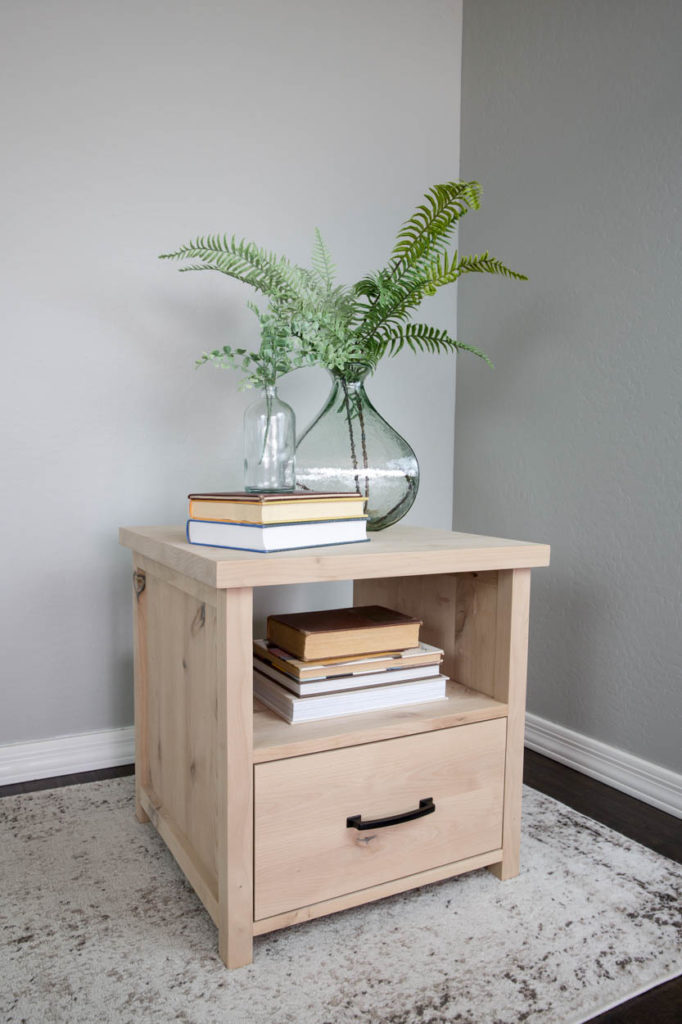
I’ve got a brand new side table project to share and I am thrilled with how it turned out! I’m partnering with my friends over at Build Something to bring you the printable plans for this project, which you can download on their site. This side table has plenty of storage and also plenty of space for you to display your books or home decor. I’m sharing the photo tutorial below and I’ve also put together a video of the entire build.
*this post contains affiliate links
Why Build Your Own Furniture?
The beauty of building your own furniture is that it costs FAR less to build it than buy it. In fact, I was just recently talking about this and said that I build furniture to fit my attention span. Seriously! If a piece of furniture lasts for years and years, great! But if my tastes suddenly change and I decide I want to build something new for a room, it doesn’t break the bank like it would if I were BUYING new furniture.
Another huge benefit? If something needs to be repaired, you can likely fix it very easily. For example, let’s say your oldest son’s friend gets locked under your youngest son’s bed and decides to kick his way out and breaks to door off. You can fix it! Trust me, that helped me calm down A LOT when that incident happened. Imagine if I had bought that captain’s bed and had to try to find a replacement door?!
Watch: How To Build A Side Table With Storage
Step By Step Tutorial: How To Build A Side Table

I built this side table using rough-cut knotty alder. This means that I had to mill down the lumber to dimensional sizing. I drew up the plans for this project to reflect dimensional lumber sizing (for example: a 2×2 is 1 1/2″ x 1 1/2″) to make it easier to follow.
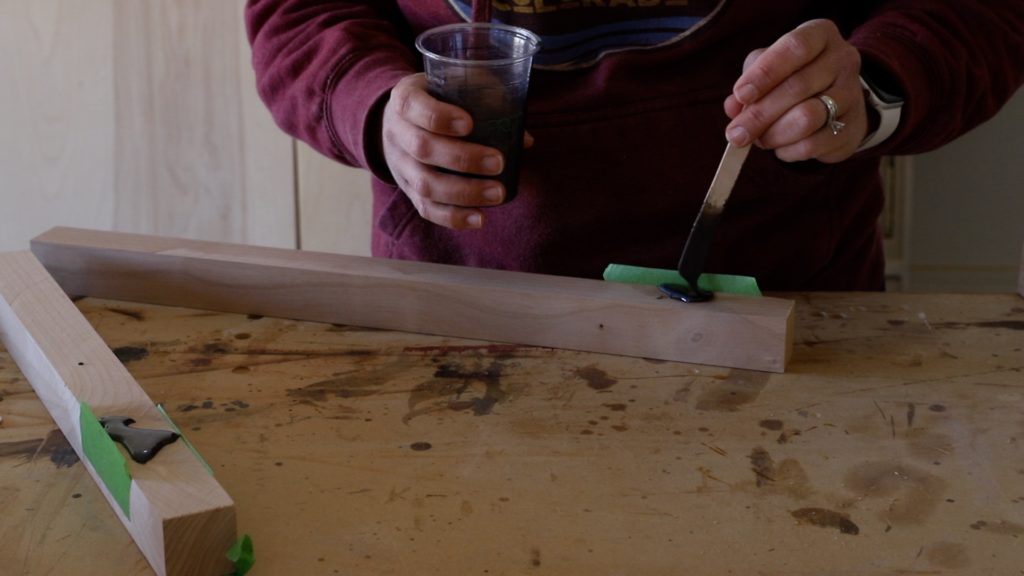
In using knotty alder, it also meant that I had quite a few large knots in the wood. I filled them all with epoxy that I tinted with gray pigment powder. It fills them in really nicely and provides a more finished look.
Build The Side Panels and Shelf
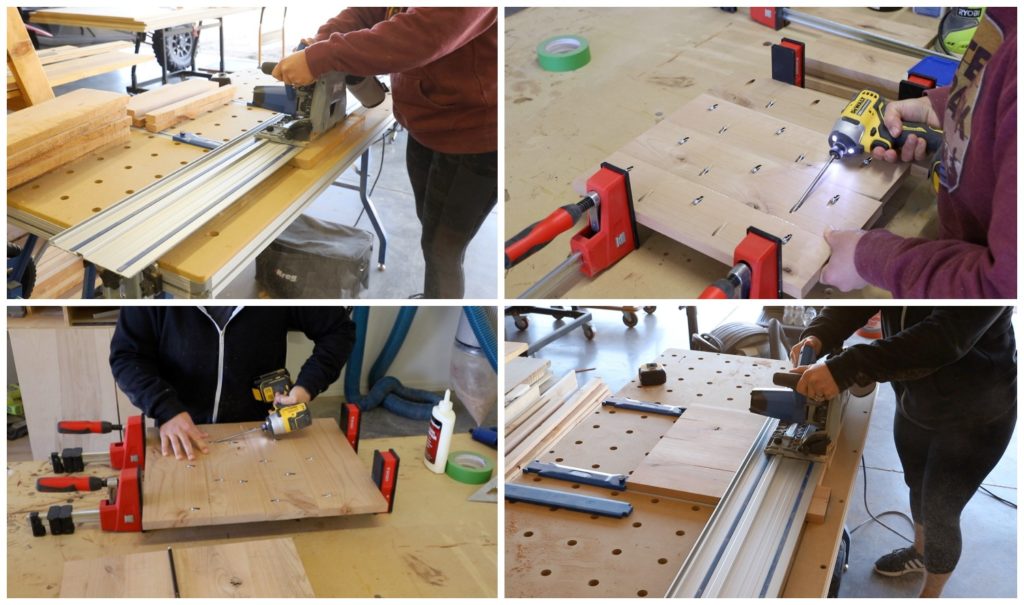
To get started, you’ll want to build the side panels and the shelf. Cut all of the wood to the dimensions listed in the printable plans. Drill 3/4″ pocket holes into the boards. Glue up the joints and clamp together, then secure with 1 1/4″ pocket screws. I cut the panel boards a bit long because it’s difficult to ensure they are assembled perfectly flush with each other. I used my Adaptive Cutting System to square up one end, then turned the panel around to trim it down to size. I followed these same steps to build the shelf of the table as well.
Drill 3/4″ pocket holes into all four sides of the side panels and each end of the shelf.
Build the Back Panel And Drawer Front
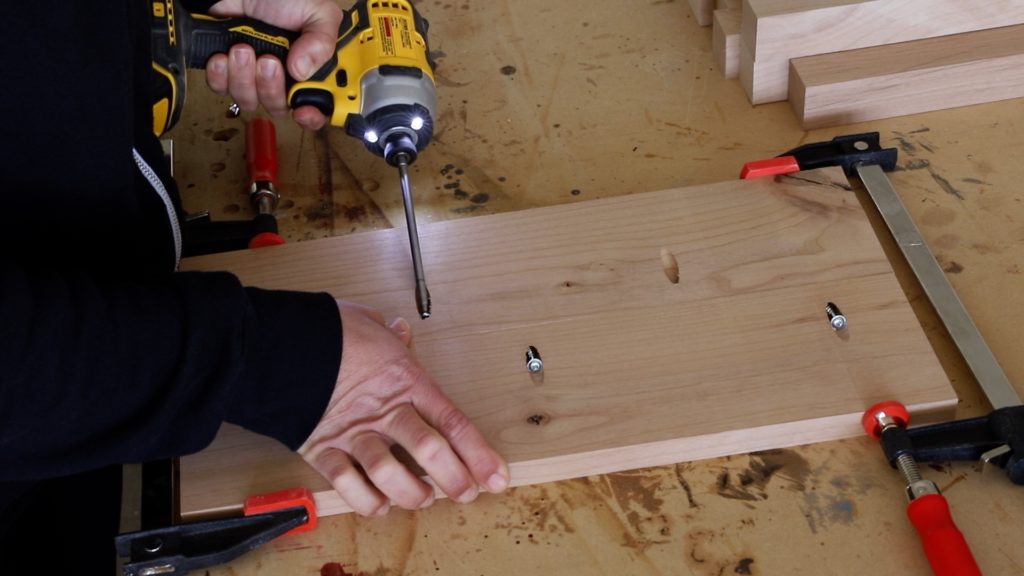
Drill 3/4″ pocket holes in the boards that make up the drawer front and back panel of the side table. Glue and clamp the boards together, then secure with 1 1/4″ pocket screws.
Assemble The Table Base

With the panels built, it is time to assemble the table base. Drill 1 1/2″ pocket holes into the 17 1/2″ 2×2 pieces. Glue and clamp these pieces to the top and bottom edges of the side panels. Secure in place with 1 1/4″ pocket screws. Attach the legs with wood glue and 2 1/2″ pocket screws as well as 1 1/4″ pocket screws where the panels meet the legs.
Attach the stretchers to the front and back sides of the table base, 1 1/2″ up from the bottom of the legs. Use wood glue and 1 1/4″ pocket screws to attach.
Glue and clamp the solid back panel of the table in place. Secure with 1 1/4″ pocket screws.
Build The Table Top

For the table top, I ripped 6/4 knotty alder down to 5 1/2″ widths. 6/4 lumber is 1 1/2″ thick, so ripping them to 5 1/2″ wide makes them the equivalent of 1×6 boards. Again, I cut these boards a little long to trim up later. I glued up the edges of the boards and clamped them together. Be careful not to over tighten the clamps when gluing up the top to prevent bowing. I let the glue cure overnight, then trimmed the table top down to size on my Adaptive Cutting System.
Attach The Table Top
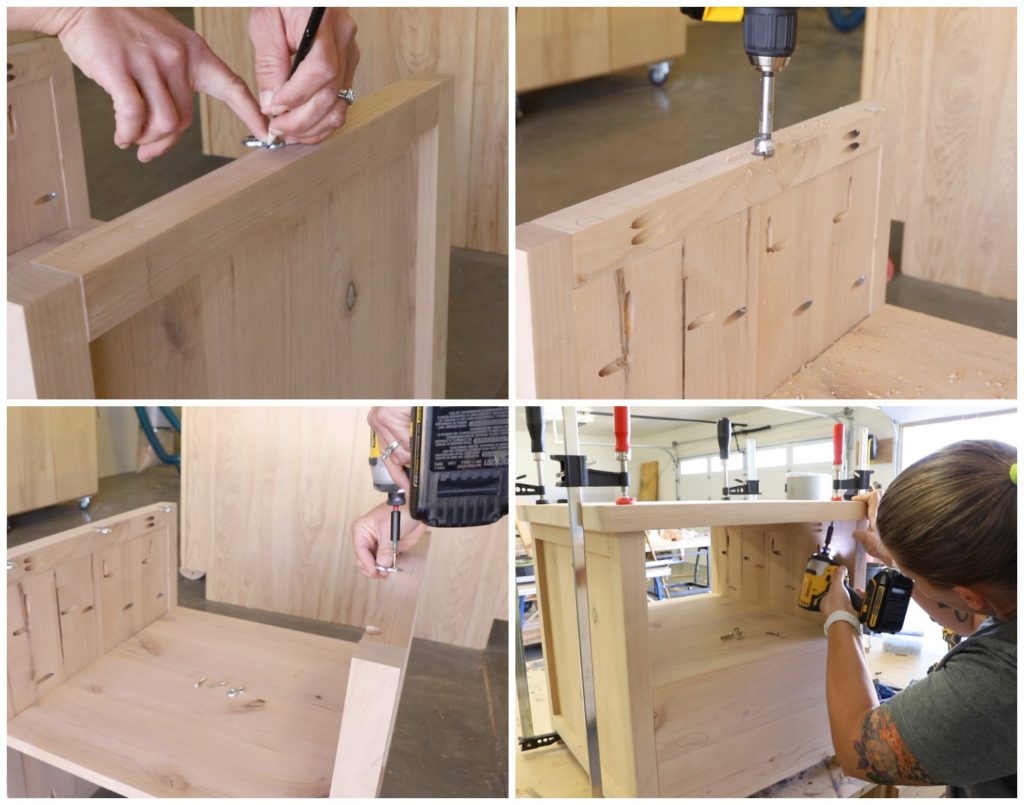
I used desktop fasteners to attach the table top to the base. I used three on each side and traced around the smaller side with a pencil. Using a 3/4″ forstner bit on my drill, I drilled a hole approximately 1/8″ deep. The fastener should be flush with the top of the base. I attached the fasteners with 1 1/4″ wood screws. I centered the table top over the base and then clamped it in place. I then attached it through the other end of the fastener with 1 1/4″ wood screws.
Build Drawer Boxes

I ripped my plywood pieces to 7″ wide and then cut them down to length on my miter saw. I drilled 3/4″ pocket holes into the front and back pieces of the drawer box. I glued and clamped the pieces together, then secured them with 1 1/4″ pocket screws. I cut 1/4″ plywood to match the dimensions of the drawer box, then attached it with wood glue and 3/4″ narrow crown staples. You can also use brad nails for this.
Installing Drawer Slides
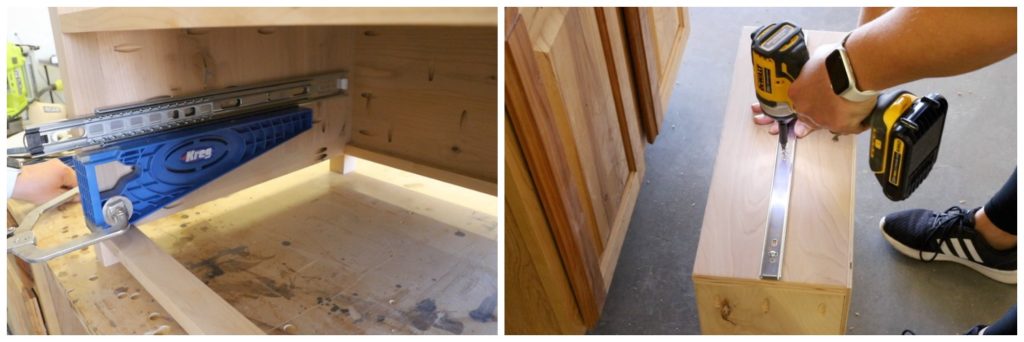
Install the drawer slides using the Kreg drawer slide jig. For this table, rest the drawer slide jigs on the bottom stretcher and clamp into place. Drill 1/16″ pilot holes into the drawer slide holes and attach with the included screws.
For the drawer box, center the drawer slides on each side of the drawer box. Drill pilot holes and then attach with the included screws.
Attach The Drawer Front
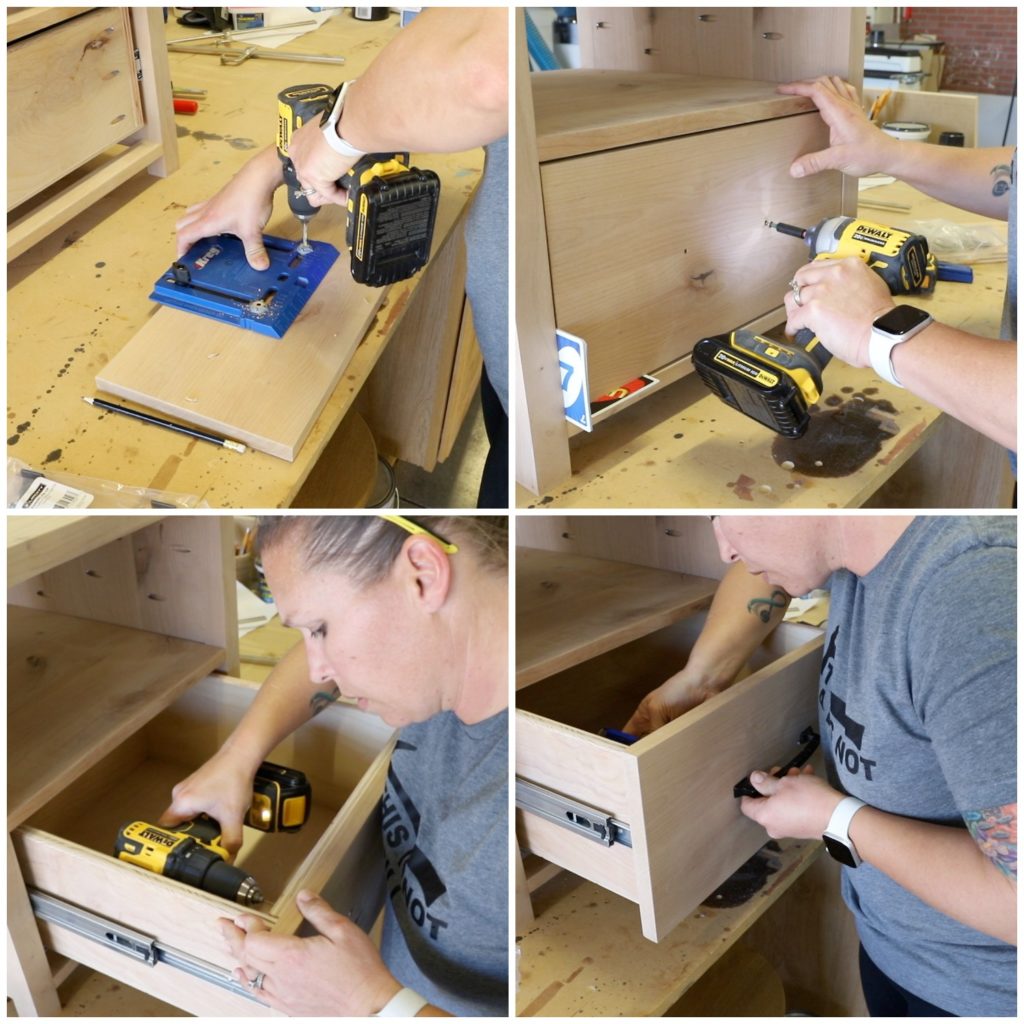
To attach the drawer front, use the Kreg cabinet hardware jig to drill the holes for the handle/pull you will be attaching. Set up the jig so the hole placement is the same as your hardware. Drill the holes into the drawer front only. Center the drawer front over the drawer box. Playing cards work great to set an even gap all of the way around. Drive 1 1/4″ wood screws through the holes and into the drawer box. Pull the drawer out and drill pilot holes into the inside of the drawer box close to all four corners. Attach the drawer front with 1 1/4″ wood screws. Finish drilling the 3/16″ holes through the first two holes drilled. Attach the drawer handle/pull.
Finish the project as desired
This project can be finished any way you like. I am choosing to leave it natural for the moment until I build the matching coffee table. I also need a little time to really decide just how I want to finish it.

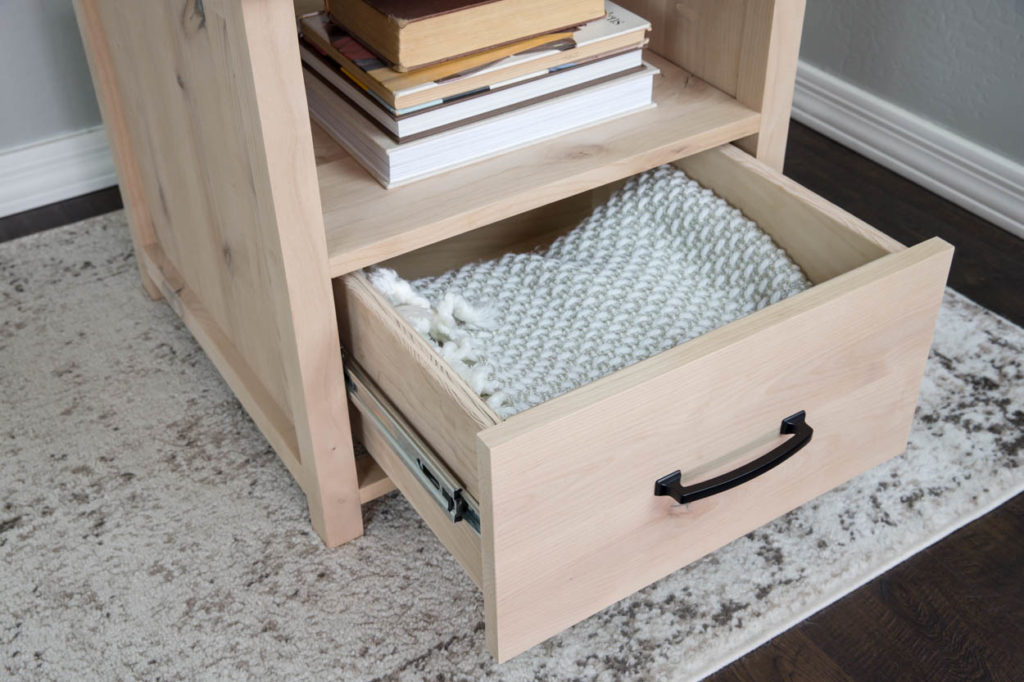
I’ll be honest, I’m kind of loving the black hardware against the natural wood. I may go pretty light on the finish with this. What do you think?
Make sure that you visit Build Something to get the plans for this project! If you want to add it to your project list, be sure to pin it for later!
DISCLOSURE: I was provided products and/or compensation for this post. All opinions and ideas are 100% my own.

Great Video Katie! This is definitely a project I want to do for my family. Beautiful!
Thank you so much!